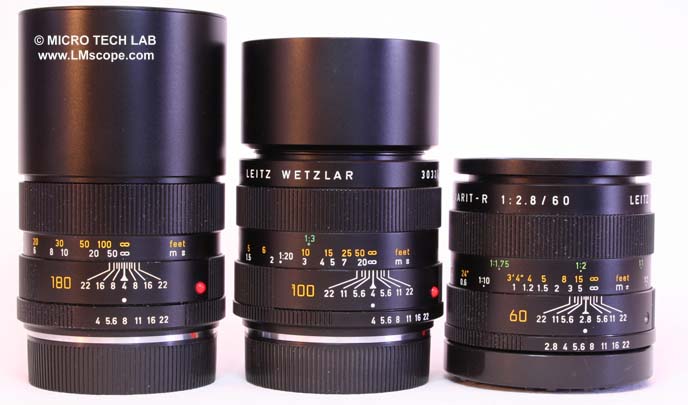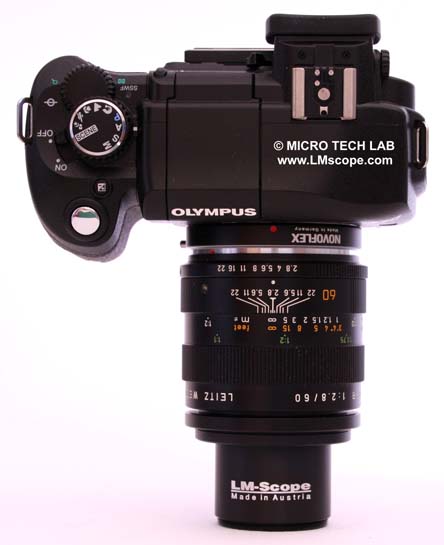

Digital macro photography with “classic analogue lenses” at bargain prices
Top of the range analogue models from the 1980s and 1990s can be found at bargain prices on the second hand market. These lenses perform especially well in macrophotography in combination with modern digital SLR cameras. The one-time top of the range models are extremely well made and have very good optical characteristics.
Many new digital lenses appear inferior in comparison. In the extreme macro range, the auto focus is generally overtaxed and has to be deactivated. With some subjects, the auto focus is unable to manage at all or is simply too inconvenient. Because of the auto focus there is always a certain shutter lag, and in extreme cases the camera completely refuses to release the shutter. In nature photography, when photographing living insects, every millimetre counts, and so when using strong conversion lenses such as the LM macro lens in particular, another exposure method should be used. By using the conversion lens, the working distance is reduced from one metre to just a few centimetres. The focal plane is set through the working distance. It is only here – plus or minus a few millimetres – that it will be possible to clearly reproduce the object. The entire camera-lens unit moves backwards and forwards until the object is in sharp focus.
.
When using analogue lenses on digital SLRs it should be ensured that the camera has fully automatic exposure control. Caution! Nikon’s low priced beginners’ cameras (D40/D50/D60/D80/D90/D500) can only carry out an exposure using digital lenses. With other manufacturers’ digital lenses or analogue lenses, it is necessary to carry out a laborious manual exposure. In the case of other manufacturers such as Canon and Olympus, the low price beginners’ cameras also have fully automatic exposure control.
When testing with our LM macro lenses we achieved very good results with the classic analogue lenses. There was a high level of detail with optimum colour reproduction. On the whole, new digital lenses do not produce better results, although they are lighter due to the use of plastics. In our tests we used the following lenses: Leitz Wetzlar Elmar-R 1:4 / 180 mm, Leitz Wetzlar Elmar-R 1:4 / 100 mm, Leitz Wetzlar Macro Elmarit-R 1:2.8 / 60 mm
Conclusion: In the extreme macro range, top of the range analogue models easily keep pace with digital lenses, or are even superior, providing solid handling and top quality at bargain prices! Our tip: Buy an expensive camera body and look around for a classic lens from a dealer or on eBay.
New LM Digital Adapter for: Sony Alpha 9 III / Nikon Z9 / Nikon Z8 / Sony Alpha 7R V / Sony Alpha 1 II / Sony Alpha 1 / Sony Alpha 9 II (ILCE-9M2) / Sony FX3 Cinema Line / Sony Alpha 9 / Nikon D6 / Canon EOS R3 / Canon EOS R6 Mark II / Canon EOS R8 / Sony Alpha 7R IV / Canon EOS R5 II / Nikon Z6III / Canon EOS R5 / Sony Alpha 7S II / Sony Alpha 7S III / Sony Alpha 7R III / Canon EOS R6 / Nikon Z6 / Nikon Z6II / Sony Alpha 7R II / Nikon Z7 / Nikon Z7II / Canon EOS R / Canon EOS Ra (Astro) / Nikon Z5 / Sony Alpha 7C / Canon EOS RP / Sony Alpha 7S / Canon EOS R7 / Leica SL2-S / Canon EOS R10 / Nikon Z50 II / Canon EOS 1D X Mark III / Nikon Z50 / Nikon Z30 / Nikon Z fc / Nikon D850 /

